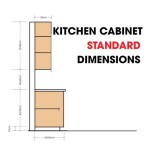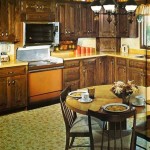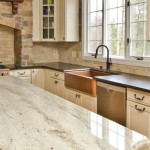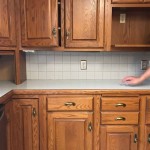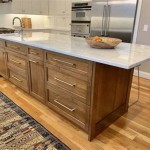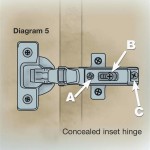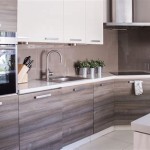How Much Is A Built-In Cabinet? A Comprehensive Cost Breakdown
Built-in cabinets offer a compelling blend of aesthetic appeal and practical storage solutions, making them a popular choice for homeowners seeking to maximize space and enhance the functionality of their living areas. Unlike freestanding furniture, built-in cabinets are custom-designed and installed to seamlessly integrate with the existing architecture of a room. However, this bespoke nature also means that the cost of built-in cabinets can vary significantly based on several factors. Understanding these cost drivers is essential for planning your budget and achieving the desired outcome for your cabinetry project.
To accurately estimate the cost of built-in cabinets, consider the primary components that contribute to the final price. These include materials, size and complexity, design intricacy, hardware choices, labor costs, and geographical location. Each of these elements plays a crucial role in determining the overall expenditure. Furthermore, pre-existing conditions in the installation area, such as uneven walls or the need to relocate electrical wiring or plumbing, can also impact the total cost.
Materials Used in Built-In Cabinets
The choice of materials significantly impacts the final cost of built-in cabinets. Options range from budget-friendly materials like particleboard and melamine to more expensive and durable hardwoods. The following provides a breakdown of common materials and their associated cost considerations:
Particleboard: Particleboard is a relatively inexpensive material commonly used for cabinet boxes. It consists of wood chips and resin pressed together. While affordable, particleboard is less resistant to moisture and can be prone to damage if exposed to water leaks. It’s often covered with a laminate or veneer for a more aesthetically pleasing finish. Its cost-effectiveness makes it a popular choice for budget-conscious projects, but its durability limitations should be considered.
Medium-Density Fiberboard (MDF): MDF is a step up from particleboard in terms of durability and smoothness. It’s made from wood fibers compressed with resin and offers a consistent surface ideal for painting. MDF is less susceptible to warping than solid wood, making it a suitable choice for cabinet doors and drawer fronts. While more expensive than particleboard, MDF provides a good balance between affordability and performance.
Plywood: Plywood is composed of multiple layers of wood veneer glued together, providing excellent strength and stability. It’s more resistant to moisture than particleboard and MDF, making it a better option for areas prone to humidity, such as kitchens and bathrooms. Plywood is commonly used for cabinet boxes and shelves, offering long-lasting performance. The cost of plywood varies depending on the type of wood used for the veneers and the thickness of the plywood sheet.
Hardwoods: Hardwoods such as maple, oak, cherry, and walnut are premium materials that offer exceptional durability and beauty. Hardwood cabinets are typically more expensive than those made from engineered wood products. Hardwoods are known for their natural grain patterns and can be stained or painted to achieve a variety of looks. They are often used for cabinet doors, drawer fronts, and decorative trims. The superior strength and longevity of hardwoods make them a worthwhile investment for homeowners seeking high-quality cabinetry.
Softwoods: Softwoods like pine are a more affordable solid wood option. While not as dense or durable as hardwoods, pine can be a visually appealing choice, especially for rustic or farmhouse-style cabinetry. Pine is typically stained or painted and can be susceptible to dents and scratches. Its lower cost makes it an attractive option for budget-friendly projects, but its susceptibility to damage should be taken into account.
Laminates and Veneers: Laminates and veneers are thin layers of material applied to a substrate such as particleboard or MDF. Laminates are typically made of plastic or paper and offer a wide range of colors and patterns. Veneers are thin slices of real wood that provide the look and feel of solid wood at a lower cost. Both laminates and veneers can enhance the aesthetic appeal of cabinets while offering protection against scratches and moisture.
Size, Complexity, and Design Intricacy of Built-In Cabinets
The dimensions and complexity of the built-in cabinet design are significant factors influencing the overall cost. Larger cabinets require more materials and labor, leading to higher expenses. Similarly, intricate designs with elaborate detailing, custom shapes, or specialized features will necessitate increased labor hours and potentially specialized materials, further escalating the price.
The size of the built-in cabinet is a straightforward cost driver. Larger cabinets require more material, translating directly into higher material costs. Furthermore, larger cabinets inherently involve more labor to construct, assemble, and install. The sheer volume of work increases with size, contributing to a larger bill for labor costs.
The degree of complexity in the cabinet design also plays a vital role. Simple, rectangular cabinets with basic shelves are generally less expensive to build than cabinets with curved doors, angled shelves, or intricate molding. Complex designs necessitate more precise cuts, specialized joinery techniques, and increased time spent on assembly. These factors directly impact the labor costs associated with the project.
The level of design intricacy further influences the cost. Cabinets with elaborate carvings, raised panel doors, or custom trim require specialized skills and more time to execute. These decorative elements add visual appeal but also increase the complexity of the construction process, leading to higher labor costs. The use of specialized hardware, such as soft-close hinges or decorative pulls, can also contribute to the overall cost.
Customization is a key aspect of built-in cabinets, but it comes at a price. Tailoring the cabinets to fit specific dimensions, accommodate unique storage needs, or match a particular aesthetic requires careful planning and execution. Custom designs often involve non-standard sizes, unusual shapes, and specialized features, which demand more time and skill from the cabinet maker. The more customized the design, the higher the price is likely to be.
The integration of specialized features, such as pull-out shelves, built-in lighting, or hidden compartments, adds to the complexity and cost of built-in cabinets. These features require additional materials, hardware, and labor to install. While they enhance the functionality and convenience of the cabinets, they also contribute to the overall expense of the project.
Labor Costs and Geographical Location
Labor costs are a substantial component of the overall built-in cabinet expense. Experienced and skilled cabinet makers typically charge higher hourly rates than less experienced professionals. The complexity of the installation, the geographical location, and the demand for local services all influence the prevailing labor rates. It is advisable to obtain quotes from multiple contractors to compare prices and ensure a fair estimation.
The experience and skill level of the cabinet maker directly impact the labor cost. Highly skilled craftsmen with extensive experience command higher hourly rates due to their expertise and ability to handle complex projects efficiently. Their proficiency ensures a high-quality finished product and minimizes the risk of errors or delays. While their services may be more expensive, the investment in skilled labor can be worth it in the long run.
The complexity of the installation also affects labor costs. Installations that involve removing existing structures, modifying walls, or relocating electrical wiring or plumbing will require more time and effort, leading to higher labor charges. The more intricate the installation process, the more labor hours will be needed to complete the project successfully.
Geographical location plays a significant role in determining labor costs. Labor rates vary considerably depending on the region. Metropolitan areas typically have higher labor costs than rural areas due to the higher cost of living and increased demand for skilled tradespeople. The prevailing market rates in your specific location will influence the overall cost of the project.
Demand for local services can also impact labor costs. During times of high demand, such as peak remodeling seasons, contractors may charge higher rates due to increased workload and limited availability. Scheduling your project during off-peak seasons can potentially result in lower labor costs.
It is recommended to obtain multiple quotes from different contractors to compare prices and services. This allows you to assess the prevailing market rates in your area and choose a contractor that offers a fair price for the quality of work they provide. Be sure to carefully review each quote and understand the scope of work included before making a decision.
The cost of hardware, such as hinges, handles, drawer pulls, and slides, can significantly contribute to the overall price of built-in cabinets. High-quality hardware made from durable materials like stainless steel or solid brass will generally be more expensive than less expensive options made from plastic or plated metal. The choice of hardware not only affects the aesthetic appearance of the cabinets but also their functionality and longevity.

How Much Is Built In Cabinet Here Are The 3 Guides For Cost 9creation

What Do Built In Cabinets Cost Greatbuildz

How Much Do Custom Kitchen Cabinets Cost

How To Diy Built In Cabinets For Home Office

More Like Home How To Turn Stock Cabinets Into Diy Built In S

How To Diy Built In Cabinets For Home Office

Upper Cabinets Made Into Built Ins Just Call Me Homegirl

More Like Home How To Turn Stock Cabinets Into Diy Built In S

How To Diy Built In Cabinets For Home Office

Diy Built In Bookcases Cabinets And Window Bench
Related Posts

